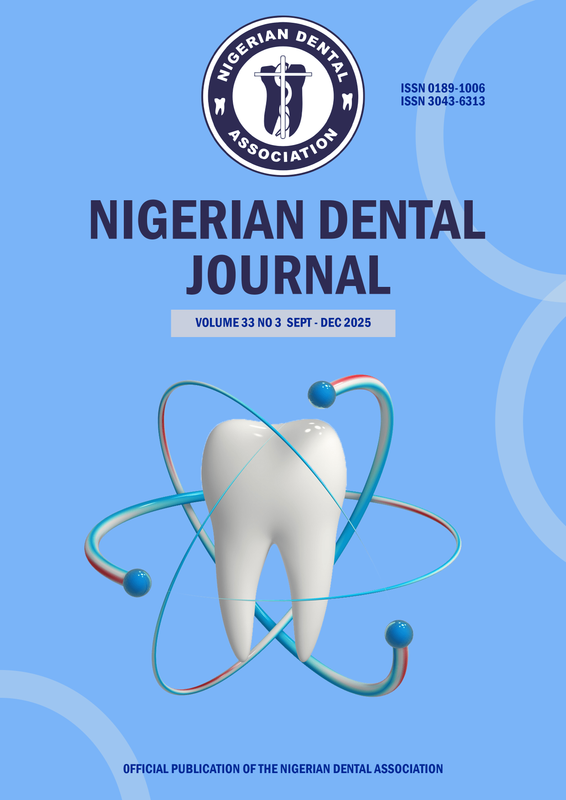A survey of methods and practices used to stop digit sucking in 2-5 year old children in Benin Cit, Edo State
DOI:
https://doi.org/10.61172/ndj.v17i1.209Keywords:
Digit sucking, Children, Benin CityAbstract
Objective: To analyze the methods and practices used to stop digit sucking in 2-5-year old children in Benin City, Edo State, Nigeria.
Method: A prospective study was carried out and the study group comprised 1031 pre-school children aged 2-5-years, selected from day care centres and pre-schools in three local government areas using stratified random sampling.
Result: The result showed that 15.4% of the children had a digit sucking habit (thumb and finger sucking) which increased with age, with the highest number seen in the 3 and 5-year-old age group (p <0.05). Boys tended to have a higher prevalence of digit sucking than girls. Attempts to stop the habit were made by 73.6% of the parents or guardians of the children with the most common method being the use of adhesive plaster on the digit in 41.9% of the children. Negative practices were found in 9.4% and included the use of razor blade to cut the digits, and the application of bitter or peppery tasting substances in 12.8%. Reward system was used in 6.8% and the use of appliances in only 0.8%.
Conclusion: The findings from this study show that the most common method to stop digit sucking habit was the use of adhesive plaster. Negative practices included the use of razor blade to cut the digits and the application of bitter or peppery tasting substances. The use of appliances was not common and many mothers were not aware that such a method existed.
Downloads
Downloads
Published
Issue
Section
License
Copyright (c) 2009 I. N. Ize-Iyamu, M. C. Isiekwe

This work is licensed under a Creative Commons Attribution 4.0 International License.
Open Access Statement
- We became fully Open Access since January 2023.
- Our new and archived materials are available free of charge on open basis and under a Creative Commons license as stated below.
Copyright statement
Copyright © 1999 The authors. This work, Nigerian Dental Journal by Nigerian Dental Association is licensed under Creative Commons Attribution 4.0 International License.

